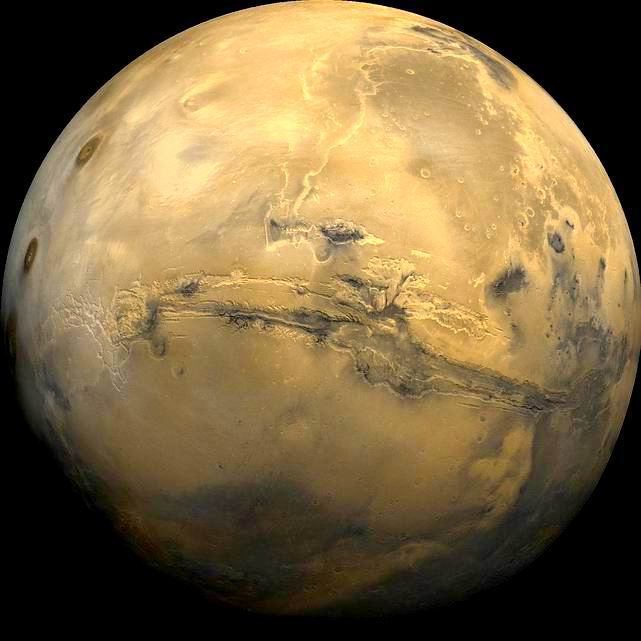|
The Enigmas on Mars 59 |
|
|
..
Times Magazine
For the last ten years, Astronomer Tsuneo Saeki of the Osaka observatory (90 miles from Hiroshima) has been keeping an eye on Mars. About 4 a.m. on Jan. 16, he saw a great grey cloud on the face of the red planet. It rose some 60 miles into the air, he estimated, and covered a roughly circular area about 900 miles in diameter. He watched it tensely for 30 minutes; then clouds in the earth's atmosphere cut off the view. When the weather finally cleared, the clouded side of Mars had turned away. Saeki reported his observation to top astronomers in Tokyo, who hold him in high regard. It was no ordinary Martian cloud, he said, but must be the product of a "terrific explosion." He added that he was not certain that the explosion could be of volcanic origin. The ominous "explosion on Mars" was reported throughout the world's press and stirred many an uneasy quiver. Some nervous folks thought of the hydrogen bomb and wondered whether the Martians had "got it" before the U.S. or even before the Russians. Others remembered that in H. G. Wells's War of the Worlds, the first sign of the interplanetary invasion was great explosions on Mars. Since Mars revolves only a little more slowly than the earth does (its day is about 24½ hours long), a specific spot on its surface cannot be observed on the same night in both Japan and the U.S. By the time night comes in one earthly hemisphere, the Martian region visible from the other earthly hemisphere has turned away. So U.S. astronomers could not check up on Saeki immediately. But by last week the part of Mars
that Saeki had observed
was visible from the U.S. Mars Authority Dr. Gerard
Peter Kuiper of McDonald
Observatory, Fort Davis, Texas, took a good look and
saw nothing unusual.
He thinks Saeki saw a cloud of ice crystals, not
uncommon when Mars is
far away from the sun. The "terrific explosion"
could not have been volcanic,
he said, for Mars is "a played out planet with no
volcanic activity." That
talk about a bomb? "Irresponsible," said Dr. Kuiper.
SOURCE: TIME MAGAZINE Feb 1950 |
|
| FAIR USE NOTICE: This page contains copyrighted material the use of which has not been specifically authorized by the copyright owner. Pegasus Research Consortium distributes this material without profit to those who have expressed a prior interest in receiving the included information for research and educational purposes. We believe this constitutes a fair use of any such copyrighted material as provided for in 17 U.S.C § 107. If you wish to use copyrighted material from this site for purposes of your own that go beyond fair use, you must obtain permission from the copyright owner. | |
|
|

